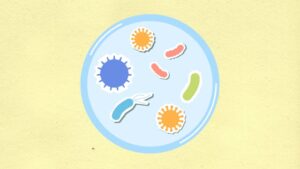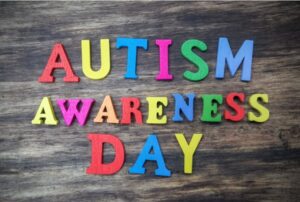Many parents worry when their children experience discomfort, such as diarrhea or stomach pain, after drinking milk. They wonder whether this means their child can no longer consume milk. In reality, these symptoms may be caused by lactose intolerance, but this doesn’t mean children have to completely avoid milk. This article will explore the causes and symptoms of lactose intolerance in children and how to help them find the right dietary approach.
What is Lactose Intolerance?
Lactose intolerance occurs when the body lacks enough lactase, the enzyme responsible for breaking down lactose found in milk, leading to gastrointestinal discomfort. In children, lactose intolerance is similar to what happens in adults. As children age, the activity of lactase in their bodies decreases. For example, the incidence of lactase deficiency in Asians is nearly 100%. However, although most people experience a decrease in lactase activity, not everyone will have noticeable symptoms.
Lactose Intolerance ≠ Inability to Drink Milk
While lactose intolerance can cause discomfort, it does not mean children must completely avoid milk. Many children with lactose intolerance can still drink milk in moderation without experiencing significant discomfort by making a few adjustments.
- Drinking Milk with Meals or After Eating Drinking milk along with other food can effectively slow the emptying of the stomach, giving the intestines more time to break down lactose. This is because when milk is consumed with food, the digestion of lactose slows down, reducing the risk of discomfort. Therefore, drinking milk during or after meals in small amounts can help reduce symptoms of lactose intolerance.
- Consuming Small Amounts of Milk Multiple Times To give the intestines enough time to process lactose, parents can give their children milk in smaller amounts multiple times a day. Consuming smaller portions at a time helps avoid overwhelming the intestines with too much lactose. For example, parents can start by offering 100-150 milliliters of milk at a time, gradually increasing the amount as the child’s tolerance improves.
- Building Lactose Tolerance Regularly consuming small amounts of lactose over time can help children build tolerance to lactose. Studies show that consistent intake of lactose in moderation can improve lactose tolerance. Even if discomfort occurs initially, it doesn’t necessarily mean they cannot continue trying to consume lactose.
Lactose-Free Milk: An Effective Alternative
For children with severe lactose intolerance, lactose-free milk is an excellent alternative. Lactose-free milk is processed with added lactase, which breaks down the lactose, preventing symptoms of lactose intolerance. Although lactose-free milk is generally more expensive than regular milk and may be harder to find in some regions, it is an ideal option for helping children continue to get the nutritional benefits of milk.
Lactase Supplements: A Solution to the Problem
In addition to lactose-free milk, parents can also consider giving their children lactase supplements when they drink regular milk. These supplements help break down the lactose in milk, reducing discomfort from lactose intolerance. For children with more severe lactose intolerance, especially infants, lactase supplements can help them continue to get essential nutrients from breast milk or dairy products, such as calcium, iron, and zinc.
Yogurt and Probiotics: A Helping Hand
Yogurt is a naturally fermented dairy product with lower lactose content, and the probiotics produced during fermentation can help break down lactose. For children with lactose intolerance, yogurt is an ideal alternative to milk, allowing them to maintain their nutritional intake while avoiding gastrointestinal discomfort caused by excessive lactose. Additionally, probiotics can improve the gut microbiome, further reducing lactose intolerance symptoms.
Conclusion
Children with lactose intolerance don’t necessarily need to completely give up milk and dairy products. By consuming small amounts of milk multiple times a day, drinking milk with meals, choosing lactose-free products, or using lactase supplements, most children with lactose intolerance can find a dietary approach that works for them. If your child frequently experiences discomfort after drinking milk, it’s a good idea to consult a doctor to develop a personalized dietary plan that ensures their nutritional needs are met without causing unnecessary discomfort.
References
- National Institute of Diabetes and Digestive and Kidney Diseases (NIDDK). Lactose Intolerance.
- Mayo Clinic. Lactose Intolerance: Symptoms and Causes.
- American Academy of Pediatrics. Lactose Intolerance in Children.
- Cleveland Clinic. Lactose Intolerance.
- American Gastroenterological Association. Lactose Intolerance.













